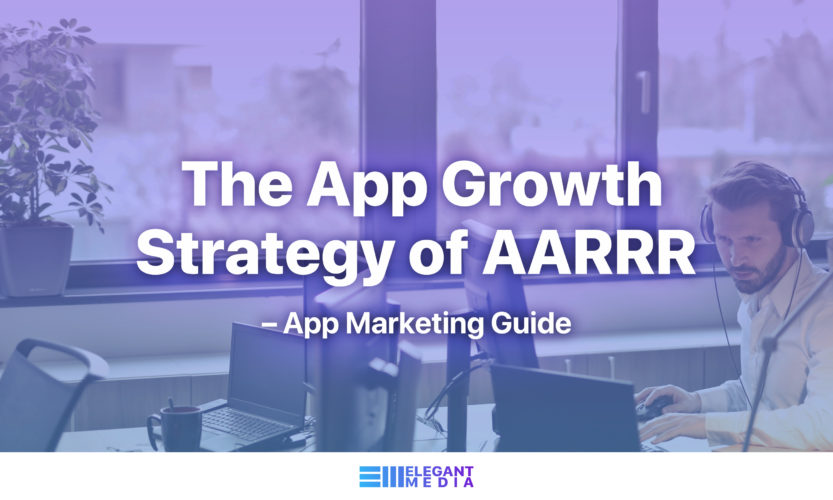With billions of Apps now in the App Store, you need a solid growth strategy to bring more users to user your app. The AARRR strategy, which is also known as the Pirate Metrics, is a battle-tested plan that gives you actionable metrics to grow your user base exponentially. Though these measurement techniques have been around for a long time, it has been popularised by Dave McClure of 500Startups.
Though it is explained below as it relates to launch of an App, these metrics can be applied to any digital product with ongoing user activity.
AARRR is an abbreviation for the following steps.
- Acquisition
- Activation
- Retention
- Referral
- Revenue
Most people think building an app is a simple process which you can do within a few weeks. However the high-growth apps are designed and planned with growth, scalability and distribution in mind from the start. Here is the simplest way to approach these metrics.
Acquisition – How do you get the users?
It’s important to think about the distribution strategy of your App. If you don’t get this right, all the other steps are practically useless. You need to have a solid strategy to acquire new users at a reasonable cost. The User Acquisition Cost (UAC) depends on your budget and the expected Average Revenue per User (ARPU) over the user’s lifetime. If you’re already funded by a Venture Capital (VC) firm, you can expect to spend a lot more money to acquire users in the beginning. High-growth companies such as Uber has very high customer acquisition costs, because most of it is subsidised by Venture Capital funding.
Activation – How Many Users Take Action?
Once you have defined a way to get users through Acquisition, the next part of your strategy should be influencing the users to ‘Activate’ the product. In other words, what’s the first hurdle a person needs to pass to become a ‘user’ of the app. In most cases, it will be the registration process. In some cases, it could be just downloading and opting-in to receive a notification through the app. Regardless of the action, you should have a clearly defined ‘activation’ goal and a method to track the ratio of users come from the acquisition stage to activation stage.
Retention – How May Users Stay?
We’ve seen apps where there are many users downloading the App and signing up, but some fail to stay as ongoing users. It’s important to engage the users back into the app from time to time. Most apps do this by sending push and email notifications encouraging them with new information about the app.
Sometimes users may get confused on how to use the product and they may never come back. To reduce drop-off rates because of this, you can use tutorials and guides within your products to make it easier for your users to understand it.
Surveys and user feedback forms can give you some insight into why the users may not use your app. If your app is in App Store or Google Play, don’t forget to monitor the user reviews. If there are negative reviews, these are direct user feedback and you can use that to improve user experience and improve the app for better retention.
Because of Hawthorn effect, when users are observed, some users may not tell the real reason why the retention rate is dropping. To eliminate those situations, you should use a tracking software such as Google Analytics to measure where users might be dropping off from a conversion funnel.
Referral – Are Users Referring your Product to Others?
As you know, one of the best marketing methods is ‘word-of-mouth’. After you have all the above steps covered, think about creating strong referral loops. Word of mouth or referrals is generally assumed as a ‘free’ way of growing the customer base. However, this is not the case anymore. Companies such as Uber and DigitalOcean have accelerated their growth by creating incentivised referral campaigns – where both the referrer and the referred user are incentivised by to bring more users. This creates a viral-loop that gives a high ROI for your marketing campaign.
Revenue – Are the Users Paying Enough?
Whether your product is bootstrapped or funded by investors, at some point you’ll plan your revenue generation strategy. If the product is bootstrapped, then you’ll closely have to monitor the revenue and the profit generated, so that you’re going to at least break-even in the initial stages.
If you’re backed by investors, your investors will have some expectation about the long-term plan for your company and when they can expect to see a return on their investment. Therefore, discuss it with the investors at early stages, and change your revenue model to align with their goals.
Summary
Launching a new App creates a lot of noise and it’s easy to get distracted with all the incoming requests after it is launched. AARRR metrics are a simple way to monitor the progress of your app or product and ensure it’s moving towards success. When you’re launching the App, create a simple dashboard to measure AARRR metrics, so that you can tweak and optimise them to reach your target levels.








